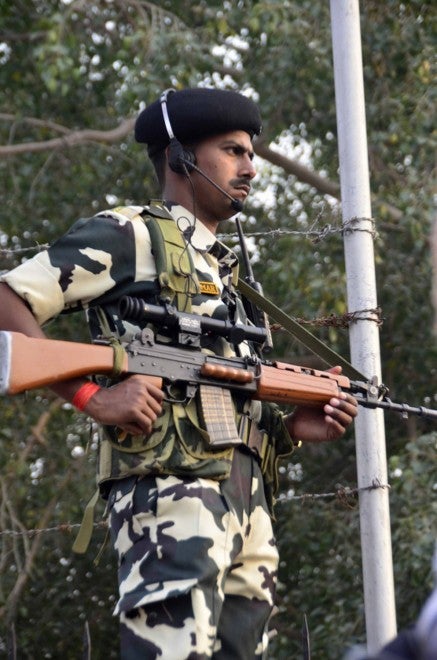The troubled INSAS rifle has met yet another stumbling block. Calling the rifle “defective, the Delhi High Court questioned the Indian Ministry of Defense’s and the Home Ministry’s issuance of the rifles, late last month, Indian Express reports:
The Delhi High Court on Wednesday issued a notice to the Home and the Defence Ministries on a PIL alleging that ‘defective’ INSAS rifles were being given to CRPF and other paramilitary forces.
A PIL filed by retired Lt Col Deepak Malhotra, who fought in the 1971 Indo-Pak and 1999 Kargil wars, has stated that the Defence Minister had informed Parliament in 2012 that indigenous INSAS rifles would be phased out by 2014, as they were “defective and outdated,” but nothing had been done so far.
The PIL alleged that the lack of new-generation rifles had “repeatedly resulted in death and injury to the brave Jawans of the Indian Army and para-military services” while fighting “well-equipped” Maoists and terrorists.
The PIL has asked the court to look into records of the “long-pending decision” to replace the rifles, and has sought orders to phase out the INSAS rifles and replace them with modern firearms.
The Indian Armed Forces use at least two other rifles besides the INSAS, the X-95 (a variant of the Israeli Tavor), and AK rifles in 7.62×39. In response to the High Court’s notice, the Home Ministry announced that all INSAS rifles in the Red Zone (an area in East India that experiences significant Maoist insurgent activity) would be replaced by AK rifles, while 50% of INSAS rifles in Northern Jammu and Kashmir – a region disputed by both China and Pakistan – would be replaced by AKs, as well. The Times of India reported on that announcement three days later:
NEW DELHI: In an effort to enhance CRPF’s capabilities in fighting Maoists in the Red zone and terrorists in Jammu & Kashmir, home ministry has ordered replacement of indigenously built but faulty INSAS rifles that the force uses with AK-47s. All INSAS guns used by the force in the red zone would be replaced by the AK-47 while 50% of the INSAS gun armoury in J&K would now have AK-47.
The home ministry sanctioned the procurement of guns two days ago following a demand from the CRPF which has been pending with the ministry for almost a year. The sanction, however, is partial fulfillment of CRPF demands. The force had sent a proposal to the home ministry last year for 100% replacement of all its INSAS guns with AK-47 rifles in Maoist areas, 50% in Jammu and Kashmir and similar grading percentage for various other theatres. “The sanction is location specific i.e. limited to Naxal-affected districts and Jammu and Kashmir. In rest of the country, the force will continue using INSAS. The decision has been taken according to the operational requirement of the force,” a senior home ministry official said.
Over 40% of guns used by the three lakh strong force currently are INSAS guns built by Defence Research Development Organisation (DRDO). The development means procurement of over 67,000 AK guns at a cost of Rs 150 crore. While 54,000 AK-47s will be provided to forces in Naxal areas, about 13,000 will go to J&K. In its proposal, CRPF had said the INSAS gun gets frequently jammed at crucial times and is a danger to the life of Jawans during anti-Naxal and anti-insurgency operations. It had said that compared to AK and X-95 guns, Insas fails far more frequently. While the error percentage in AK guns is 0.02%, in Insas it is 3%. INSAS, however, has longer range (of firing) than AK 47. “But that can be compensated with other weapons we have. What we can’t afford is a gun jamming during an encounter. Thankfully, the government has realized that the lives of our jawans are more important than promotion of faulty indigenous technology,” a CRPF officer said.
India’s indigenous rifle has some very serious flaws in its execution. One TFB reader elaborated on the disappointing state of his rifle – which was brand-new. The general experience with the guns has been that they are loaded with superfluous features, are not very reliable or durable, and that they are expensive. This last I cannot confirm, as prices for Indian weapons are difficult to pin down, and it does seem that any INSAS replacement will most likely be more expensive. The Indian government is looking to replace the rifles with a foreign offering, but so far there is no word on how that program is developing.
 Your Privacy Choices
Your Privacy Choices
